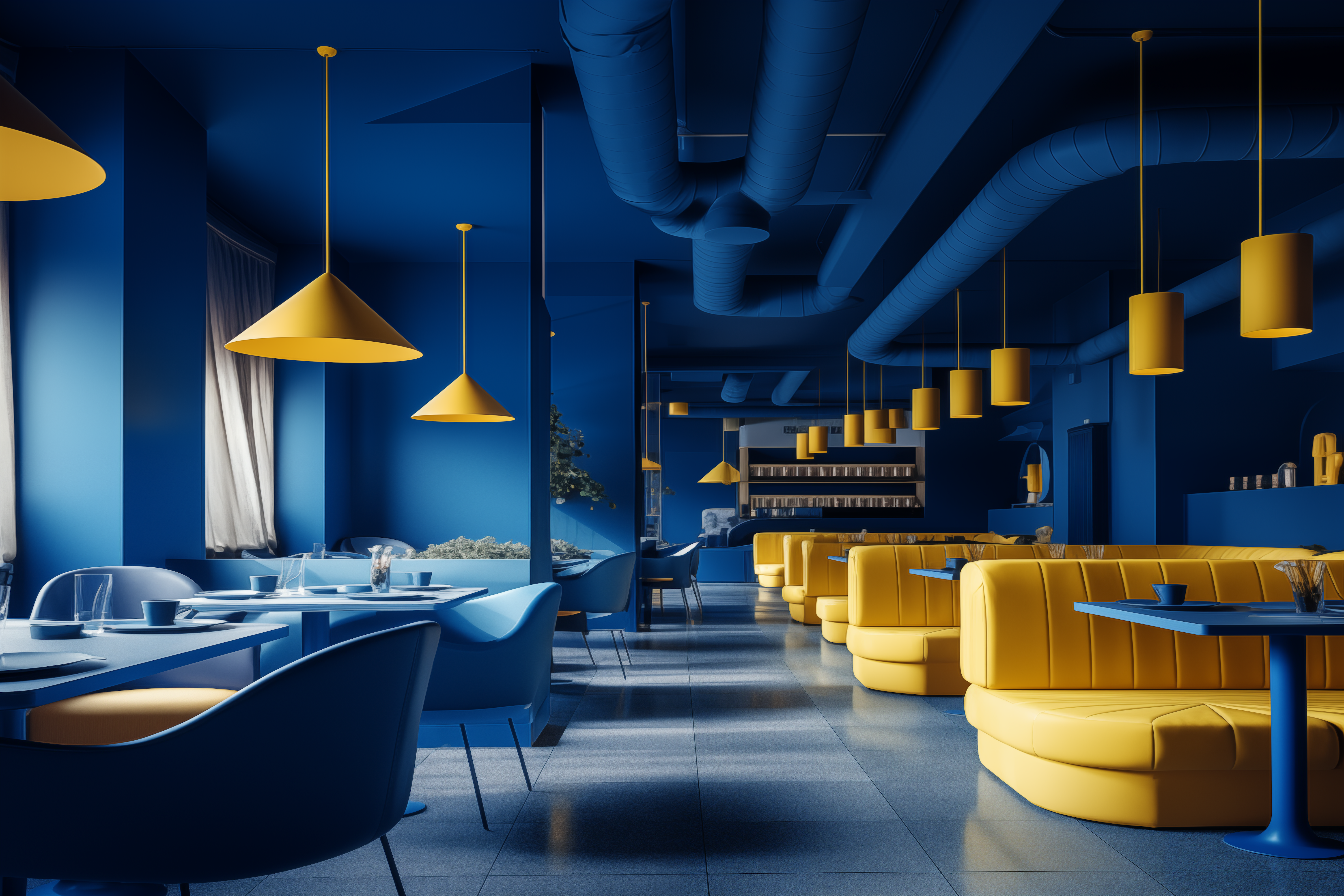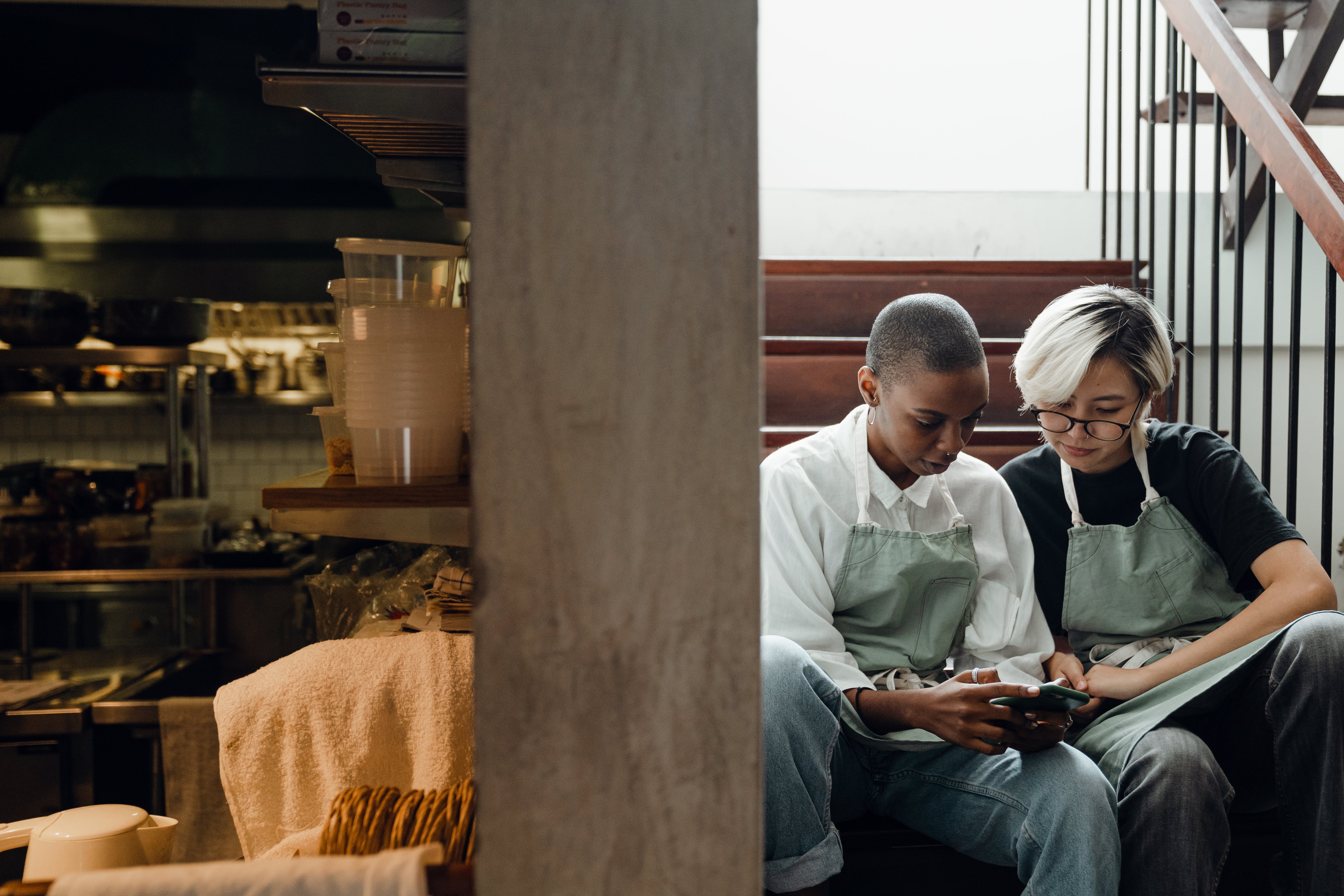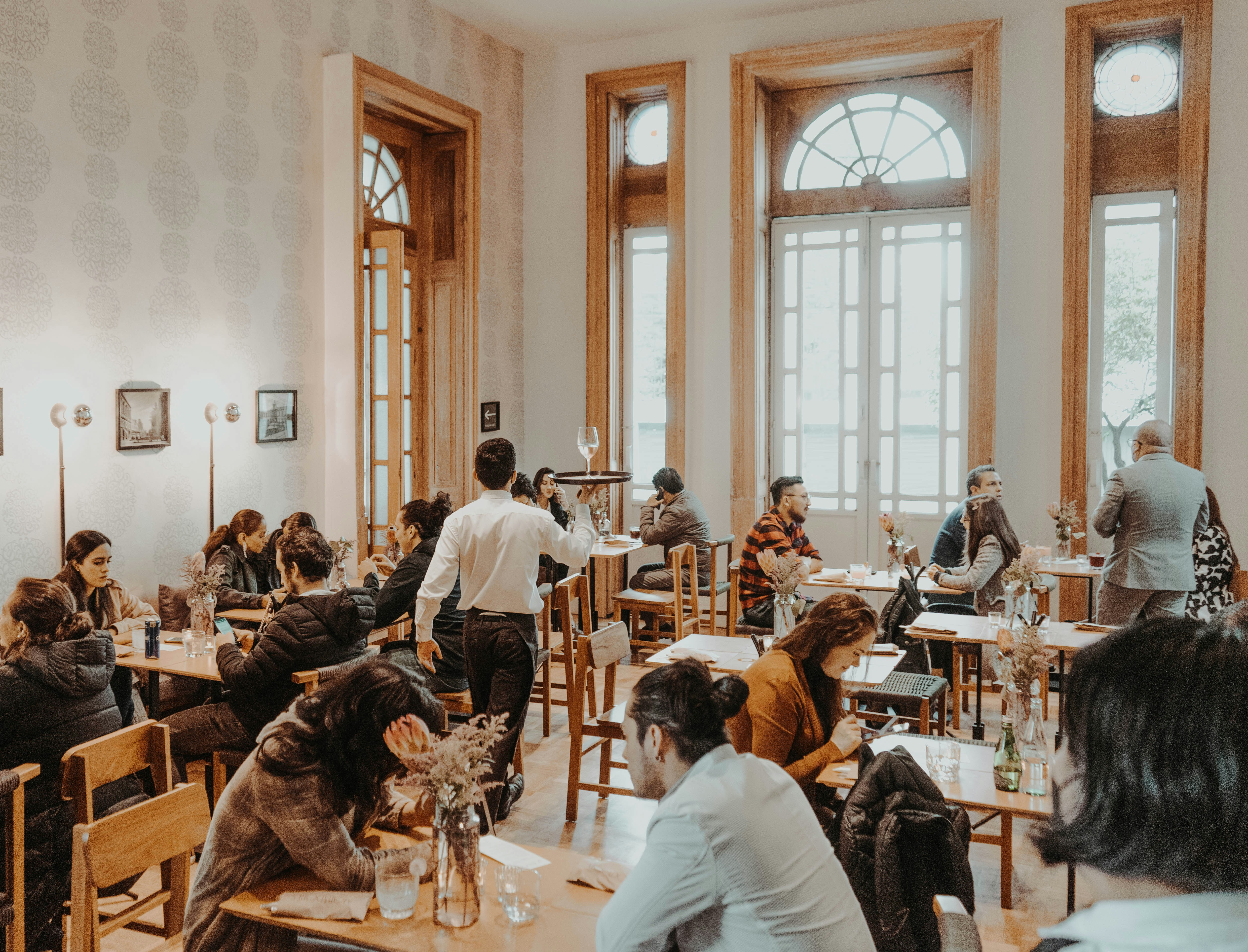Tech Stack of the Future: How Restaurants Are Digitizing
Discover how future-ready restaurants use connected tech stacks to cut costs, boost margins, and scale smarter.
From new technologies to personalized restaurant experiences and sustainability – discover the fascinating future of the restaurant industry.

Today we live in a world full of digital wonders. Robots bringing food to our tables and virtual restaurant experiences are no longer visions of the future, but part of many restaurant concepts.
The restaurant industry is on the verge of a revolutionary transformation, driven by technological advances, the demand for sustainability, changing consumer behavior, and increasing competition in the restaurant industry.
In our article, we look at what restaurants will look like in the future and some of the exciting megatrends associated with them:
The world is digital, and the restaurant industry is following suit. The level of digitalization in the restaurant industry has already developed rapidly in the past. From simple online or app reservations to digital menus and ghost kitchens, the restaurant industry of the future will be driven more than ever by digital innovation.
Reservations that can be made online with just a few clicks will be standard. Guests will have the opportunity to book a table at their favorite restaurant from home or on the go. As a result, restaurants will be able to manage their seating capacity and optimize their own occupancy rates.
The ordering process in restaurants will also be digital in the future. Many establishments already allow customers to order directly from their smartphones. Either via a mobile app or via the restaurant's website on the internet. The orders are then sent directly to the kitchen and can be processed more quickly.
In the future, digital menus will largely replace traditional paper menus. Customers will be able to access restaurant menus much more quickly online via apps or websites. In addition to helping the environment, digital menus make it easier for restaurant operators to update menus and prices online. Furthermore, digital menus often offer interactive features, such as pictures and detailed descriptions of dishes, which make it easier to make choices and help to attract more customers.
Restaurants with no dining room and no staff: these are ghost kitchens. These virtual establishments are designed specifically to deliver food, usually outsourcing the preparation of meals to commercial kitchens. Ghost kitchens got a boost from the pandemic and have been in vogue ever since. It's a concept that will continue to grow in popularity as more customers order food, have it delivered, or take it home these days.
It's no wonder that more and more businesses are turning to digital. After all, it offers restaurateurs numerous benefits. For example, digitalization increases operational efficiency, optimizes processes through automation with restaurant software solutions, strengthens competitiveness against the competition, saves costs and time, and increases guest satisfaction. By investing in digital solutions, restaurants can profit from long-term benefits and remain successful in the future.

Artificial intelligence (AI) is no longer a vision of the future. In fact, this new technology is already widely used in many areas of life. In countless restaurant chains around the world, AI is already changing the way people work and operate.
A study by McKinsey confirms that more and more companies are using artificial intelligence. The use of the modern technology has more than doubled since 2017. This is not surprising, as there are many areas where AI can continue to help restaurant operators in the future.
Artificial intelligence is automating customer service, for example. AI applications enable personalized interactions, answer questions outside of regular business hours, and overcome language barriers with ease. The use of AI will significantly reduce the workload of your employees in the future.
Will it be vegetarian, vegan, or flexitarian? AI does a great job of analyzing the needs and preferences of your customers. Based on this information, AI tools can create customized dishes that meet the customer's needs down to the last detail.
Behind every successful restaurant are the back office processes. These will benefit even more from AI in the future. From inventory management and staff scheduling to food safety. The use of artificial intelligence optimizes operational efficiency, safety, and guest satisfaction through accurate inventory management, timely staffing, and hygiene compliance. It is already reshaping the future of many restaurants through data-driven decisions for restaurateurs and streamlined operations.
In the future of the restaurant industry, AI will also be used much more in the design of recipes and menus. The example of Dodo Pizza in Dubai shows clearly how AI can help to create individual and appealing dishes. To improve menus, AI applications analyze large amounts of data. At the same time, food waste is reduced and operating costs are effectively lowered.
AI will continue to transform the restaurant advertising landscape. A study conducted by the Capgemini Research Institute shows that 62 % of experts already believe that AI will make a valuable contribution to marketing. AI-based applications can already help personalize content, streamline event organization, and improve the guest experience. In a nutshell: in the future, AI will simplify even more marketing tasks for restaurateurs and enable effective social media interactions.
Financial management is critical to a restaurant's success – not just today, but in the future. AI offers efficient solutions to automate processes and minimize errors. For example, predictive analytics enables accurate pricing and budget planning. Thanks to the reliable analysis of data and the strategic advantages that AI brings, the adoption of this new technology in the future of the restaurant is on the rise.
Recruiting staff in the hospitality industry can be a lengthy process. From analyzing candidate resumes, to automating job descriptions, to predictive analytics to forecast staff turnover. This is where artificial intelligence comes in. Many different chatbots are also currently working to significantly improve communication in the application process. When used correctly, they maintain the human touch in the recruitment process.
Robotics and hospitality already go hand in hand in many restaurants. The future of service staff is increasingly being shaped by automated solutions. From cleaning robots to serving and delivery robots – robotics is definitely here to stay.
A good example is the "BellaBot" from Sebotics, which was developed especially for hotels and restaurants. It not only facilitates guest service by taking orders from the kitchen to the table but can also compensate for staff shortages. This is a great opportunity for the hospitality industry, which has always struggled with staff shortages. Global events such as the pandemic have only exacerbated the situation.
But it's not just serving and delivery robots that are hard at work in restaurants. Cleaning robots also perform many tasks. Equipped with sensors and cameras, they recognize their surroundings and precisely mop the floor. The introduction of disinfection robots also supports hygiene efforts by making rooms up to 100 % germ-free.
The future of the restaurant industry promises that more and more AI robots will take over monotonous tasks such as chopping ingredients in many kitchens. This will significantly reduce the workload on staff. One company, Moley Robotics, has begun developing a "robotic kitchen" in which robotic arms help fetch ingredients, cook and even clean the kitchen.
They will not only take over everyday tasks from employees and increase operational efficiency, but also create a unique experience for guests.
Another trend not to be missed: virtual worlds are here to stay and will permanently change the future of many restaurants. A dining concept that makes the experience unforgettable – that's the promise of virtual and augmented reality.
Virtual reality (VR) refers to a fully simulated three-dimensional environment that can only be brought to life with the help of VR glasses. Augmented reality (AR), on the other hand, provides an "extended reality" by integrating 3D virtual objects into the real world in real time.
An exciting example of the use of virtual reality in the hospitality industry is the restaurant "Sublimotion", which opened in Ibiza in 2014. Sublimotion offers a unique dining experience where guests wear VR goggles and immerse themselves in a virtual world while enjoying an exclusive menu. Visual and acoustic effects are integrated to stimulate the guests' senses and enhance the overall experience.
On the other hand, the use of augmented reality in restaurants can bring menus to life by visualizing dishes through 3D representations. This should make it easier for customers to make choices and improve their dining experience. Examples such as the AR restaurant experience "Le Petit Chef" show how AR can reduce waiting time for orders and entertain diners in a unique way.
VR and AR also offer many human resource benefits. Through interactive, hands-on training, restaurateurs can benefit from operational efficiencies and resource savings.
The combination of VR and AR redefines guest interaction and takes the restaurant experience to a new level. The use of virtual worlds is an exciting trend for the hospitality industry that will continue to improve and enrich the guest experience through innovative technologies.

Now more than ever, sustainability is a key issue, especially in the hospitality industry. Approximately 1.3 billion tons of food are wasted every year. Many innovative solutions are already being developed to reverse this trend.
One example is Winnow, a London-based company that turns trash cans into intelligent data collectors. Cameras and scales are used to detect discarded food and determine its exact value. This solution provides real-time data on wasted portions, costs and CO2 emissions, enabling data-driven optimization of menu planning and portion control.
In the future of the restaurant industry, it will also become increasingly important to buy seasonal and regional ingredients. This is the only way to avoid long transportation routes and reduce CO2 emissions. This not only benefits the quality of the food, but also the environment.
It also includes energy efficiency, renewable energy and water-saving technologies.
By using modern technologies, restaurants can significantly reduce their energy consumption and save costs in the future. For example, energy-saving kitchen equipment and LED lighting systems can help minimize the environmental footprint today.
Renewable energy will also play an important role in the restaurant of the future. More and more restaurants are turning to solar and wind power to meet their energy needs. Solar energy can be used to heat water or provide electricity, while wind energy can be used to generate electricity. These measures not only help reduce CO2 emissions, but also make restaurants less dependent on fossil fuels.
Water-saving technologies are another important component of sustainable hospitality. Using water-saving faucets, a water recycling system, and efficient dishwashers is key. In this way, restaurants can significantly reduce their water consumption. Not only does this make good environmental sense, it can also save money.
Another important area is waste management. Restaurants often generate large amounts of waste that is often disposed of inefficiently. For example, eliminating packaging or implementing recycling programs and a composting system. In this way, you can reduce your environmental footprint and contribute to sustainability.

A look at the future of the restaurant industry shows that it will be characterized by digital innovations, artificial intelligence, robotics, and virtual restaurant experiences. These megatrends are revolutionizing not only work and operational processes, but also the customer's restaurant experience.
These are the prospects for the foodservice industry. It is digital, it is automated, it is sustainable – and with the right investments and strategies, the restaurant industry can successfully respond to the changes ahead.
Discover how future-ready restaurants use connected tech stacks to cut costs, boost margins, and scale smarter.
Want to know how to reduce food waste in restaurants? Here are 5 tips you can use to avoid wasting food in your hospitality business.
Learn about the franchise model in the restaurant industry, what it takes to open a restaurant as a franchise, and which companies are already doing...
Make sure you never miss out on updates and trends about digitalization in the hospitality industry by subscribing to our monthly newsletter. You will receive useful information delivered directly to your inbox.